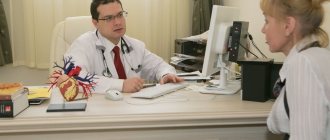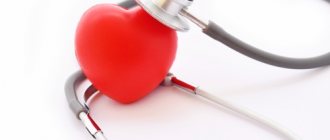A pacemaker is a programmed device that is placed in the subclavian region and regulates the heart rhythm. Foreign pacemaker implantation is generally recommended for patients with a low heart rate when automatic electrical stimulation of the myocardium is impaired.
The pacemaker consists of three parts:
- A pulse generator is a metal container that contains an electronic circuit, a processor and a battery. This device generates electrical impulses that are sent to the heart muscle.
- Electronic wires for transmitting signals from the generator to the heart.
- An electrode that is connected to the heart muscle. Its function is the two-way transmission of electrical impulses from the device to the myocardium.
The cost of such a device depends on the manufacturer and its technical features.
About the operation
A pacemaker is a small device (artificial pacemaker) that creates electrical impulses and sends them to the chambers of the heart, forcing them to contract in a certain order, synchronizing the work of the atria and ventricles. A pacemaker eliminates the slow rhythm of the heart and prevents it from stopping.
The device consists of a generator and electrodes. The generator generates electrical impulses. The electrodes conduct impulses from the generator to the chambers of the heart that need to be influenced. Depending on the pacemaker, there can be from one to three electrodes. The device weighs 30-50 grams, is equipped with a battery and a microcircuit. It is installed by an arrhythmologist surgeon through a small incision in the upper chest. The case is made of titanium coating, so the risk of rejection is minimal. All information from the ECS is sent to the desktop computer of the medical institution where the device was installed. With its help, the doctor monitors the patient’s well-being, the work of the pacemaker, and, if necessary, makes changes in the device settings.
There are several types of pacemakers:
- Single-chamber – controls and stimulates only one chamber of the heart (atrium or ventricle). Not able to imitate the physiological contraction of the heart muscle;
- Dual-chamber – connects the generator through electrodes simultaneously to the atrium and ventricle. When the need for stimulation arises, the generator sequentially directs impulses from the atrium to the ventricles, restoring normal myocardial contraction;
- Three-chamber – designed to synchronize the ventricles of the heart. Electrodes are directed into the right atrium and both ventricles. Mainly used in the treatment of chronic heart failure.
According to the functionality of the EX, they are distinguished:
- Pacemakers – set the heart the correct rhythm;
- Defibrillators-cardioverters - in addition to imposing the correct rhythm, can stop attacks of arrhythmia and ventricular fibrillation.
Modern pacemakers operate on an on-demand basis. The device automatically monitors heart rate. If the heart rate is normal, the device does not send pulses. In case of a prolonged pause (above a threshold value), the device sends a signal to the myocardium.
There are also temporary pacemakers that are used for life-threatening conditions. In such a situation, the generator is not sewn under the skin, but is located outside the patient’s body. Also, a temporary pacemaker can be used until a permanent pacemaker is installed or to relieve an attack that may disappear (for example, with a drug overdose). The procedure is carried out only in a hospital under the constant supervision of specialists.
In some cases, installing an pacemaker is the only way to save the patient’s health and life.
Positive effects of a pacemaker
Implantation of a pacemaker abroad is primarily aimed at normalizing and stabilizing the heart rhythm. This effect is achieved by electrical stimulation of the heart muscle.
In addition, modern models of pacemakers have the function of storing information about the functioning of the heart. Subsequently, a cardiologist can read this data and analyze cardiac activity. Based on such a study, the patient will be offered adequate drug treatment for arrhythmia. In this case, consultation with a specialist is included in the total price of treatment.
Indications for implantation
When drug treatment is not enough, the cardiologist recommends implantation of a pacemaker. The operation is intended to treat diseases:
- bradycardia, accompanied by constant fainting, loss of consciousness, dizziness, low pulse during physical exertion;
- atrial fibrillation;
- AV heart block with clinical manifestations;
- sick sinus syndrome;
- cardiomyopathy with impaired myocardial contractile function;
- chronic heart failure.
Relative indications include:
- AV heart block without clinical manifestations;
- fainting states are not associated with complete transverse block or ventricular tachycardia, but another cause of the condition cannot be established.
In this case, the decision on implantation is made by the doctor individually for each patient, taking into account physiological characteristics and the presence of concomitant pathologies.
In fact, there are no contraindications to installing an pacemaker. Surgery may be postponed due to viral or infectious diseases. After treatment of the concomitant pathology, the operation is carried out as planned after examinations.
Benefits of installing a pacemaker
The undoubted advantage of implanting a pacemaker in patients with chronic heart failure is saving the patient’s life. Patients with this pathology during drug therapy have a high risk of death. Also, compared to conservative treatment, installation of a pacemaker causes rapid recovery of cardiac activity. All these advantages are observed at a low cost of the operation itself. The price of the device and its fixation is several times cheaper than complex surgical intervention.
The cost of pacemaker implantation in Germany is determined by the model of the generator, the qualifications of the surgeon and the level of the cardiology clinic. The Deutsche Medizinische Union team will select a medical center for the patient, where he will have a high-tech and uninterrupted pacemaker installed. We will also advise you to contact the best German cardiologists to select the optimal model of pulse generator. During the rehabilitation period, DMU specialists will organize a visit to a cardiac surgeon to analyze the functioning of the heart and correct the function of the device.
Preparing for surgery
Before the operation, the patient must undergo a full examination and pass a list of tests. Our cardiology center of the Federal Scientific and Clinical Center FMBA offers its patients planned hospitalization. During your stay in the cardiovascular surgery department, you will undergo all the necessary tests. The list of examinations includes:
- clinical and biochemical blood test (total protein, creatinine, urea, total bilirubin, direct bilirubin, glucose, pancreatic amylase);
- determination of blood group and Rh factor;
- detailed coagulogram;
- platelet aggregation indicator ADP;
- markers of infections: HIV, hepatitis B, hepatitis C, syphilis;
- general urine analysis;
- chest x-ray;
- ECG;
- EchoCG;
- EGDS;
- Ultrasound scanning of brachiocephalic arteries;
- Ultrasound scanning of the arteries of the lower extremities and veins of the lower extremities;
- FVD;
- Ultrasound of internal organs;
- TEE;
- coronary angiography.
If during the examination the doctor discovers a concomitant pathology, you may be prescribed additional tests and consultation with related specialists (neurologist, ophthalmologist, endocrinologist, etc.).
Our center is equipped with high-precision modern equipment. Thanks to their extensive experience and many years of work experience, doctors guarantee the most accurate diagnosis and interpretation of indicators. Our own clinical diagnostic center is responsible for the accuracy of test results. By undergoing an examination with us before implantation of an pacemaker, you can be confident in the quality of the services provided and the speed of their provision. Collecting all the necessary research can take months, while we will prepare you for surgery in just 1 day.
Before the operation, the patient needs to prepare; to do this, just follow simple recommendations:
- A few days before surgery, the doctor may stop taking medications. Alcohol must be eliminated (preferably a week in advance);
- on the day before pacemaker implantation, the patient has breakfast and lunch as usual. In the evening, a light dinner is brought, the last meal should be no later than 6-8 hours before the operation. You can drink water in unlimited quantities;
- at night the patient is given a cleansing enema;
- In the morning, the patient takes a shower and prepares the surgical field. It is necessary to shave the hair in the chest area.
Before the patient is taken to the operating room, he is examined by a surgeon and an anesthesiologist. A mild sedative may be administered to calm and relieve anxiety.
Implantation of a pacemaker
The operation to implant a pacemaker is performed under local anesthesia. Depending on the type of pacemaker, the procedure can take from half an hour when installing a single-chamber pacemaker, to 2.5 when installing a three-chamber pacemaker. If the patient is right-handed, the pacemaker is installed in the left subclavian region, if left-handed - in the right. This allows you to reduce the impact of the pacemaker on the working arm.
The cardiac surgeon and assisting staff perform the following actions:
- the surgical field is treated with antiseptics and anesthetized;
- the surgeon makes a small incision about 5 cm under the collarbone and creates a pocket for implantation of the pacemaker. The pocket may be located under or above the pectoralis major muscle. The location is determined by the surgeon;
- From the incision, the subclavian vein is punctured (pierced) with a special needle;
- A conductor is inserted into the vein through a needle into the cavity of the heart. The doctor controls the movement of the conductor using an X-ray unit;
- the needle is removed and an introducer (plastic tube) is inserted into the vein along the guidewire. Depending on the type of pacemaker, if it is necessary to introduce 2 or three electrodes, an additional introducer is inserted along the same path or through a puncture of another vein;
- the conductor is removed;
- 1 or several electrodes are inserted into the heart cavity through the introducer. The electrodes are attached to the inner lining of the heart using hooks at the end of the electrode or using a special fastener that resembles a corkscrew (the electrode seems to be screwed into the inner lining);
- when the electrodes are installed in the desired location, the introducer is removed;
- the doctor connects the other end of the electrodes to the pacemaker;
- the pacemaker is implanted into a previously formed pocket under the collarbone;
- the wound is sutured;
- an aseptic dressing is applied;
After operation
The patient is under the supervision of medical personnel for a week. During this time, the sutures heal and can be removed. The patient is preparing for discharge. Before sending the patient home, he is examined by a doctor. Makes appointments and issues instructions on how to behave during the rehabilitation period and move on with your life.
After discharge, the patient registers at his place of residence and promptly visits the doctor. In the first 3 months, it is important to follow the recommendations:
- temporarily stop physical activity;
- you cannot lift weights;
- You can’t drive;
- MRI cannot be done;
- avoid radar technology;
- refuse thermal procedures;
- Report any ailments to your doctor.
You should visit a cardiologist regularly for the next six months. It is allowed to use household appliances. You need to turn them on with the opposite hand to the installed pacemaker, including when talking on the phone, and place the phone on the opposite side of the installed pacemaker. Metal detectors should be avoided in stores, airports, and concert halls.
Lifetime rules after pacemaker implantation:
- monthly visit to a cardiologist;
- daily measurement of blood pressure and pulse. It is advisable to keep a diary and mark the data;
- complete cessation of bad habits;
- carry your pacemaker passport with you.
Rehabilitation of patients with a pacemaker
The patient’s recovery after implantation occurs in two periods:
- Hospital stage. Immediately after the surgical procedure, the patient is transferred to the recovery room, where he must adhere to bed rest for several days. During this time, doctors monitor basic cardiac functions. The cost of treatment depends on the length of hospital stay.
- Home rehabilitation. The price of a specialist consultation during this period is included in the complex of cardiac medical care. At home, the patient should refrain from physical activity and water procedures for some time.
A patient with an installed pacemaker is prohibited from
- Stay in the area exposed to powerful electromagnetic fields, perform MRI.
- Be exposed to electric current.
- Use some physical therapy treatments.
- Strike the area where the pacemaker is implanted.









